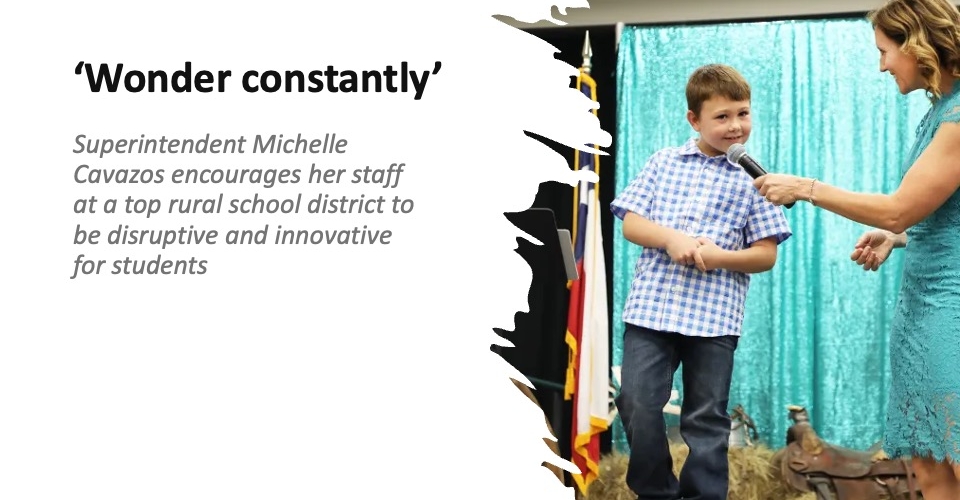Come September 2024, the goldmine, so to speak, of pandemic relief funds that school districts have been sitting on all this time will vanish. This won’t come as a shock for some districts as they’ve been cautious with their one-time expenditures. Others might think, “What do we do now?”
“It’s kind of a ‘make it or break it,’ we think, for public education,” said Director of Georgetown University’s Edunomics Lab Marguerite Roza in a webinar Wednesday. “These are big financial shocks above or beyond what’s normal in school districts.”
These financial shocks, which she has referred to as “the bloodletting,” will happen all at once, and some districts are more vulnerable than others. Here’s what to expect:
- ESSER is boosting spending, but that ends abruptly in September 2024.
- Most at risk: Districts using ESSER for recurring financial commitments via budget backfilling, new hires, or permanent raises.
- Enrollment declines mean fewer revenues in the long run.
- Most at risk: Urban districts, districts closed longer, and northern states.
- Inflation, labor scarcity, and new hiring are driving up recurring commitments.
- Most at risk: Those offering permanent raises that are larger than typical and those growing their staff roles.
- An economic slowdown would affect growth in state revenues.
- Most at risk: Districts that are more dependent on state revenue (or in states more affected by economic slowdowns).
Districts’ budgeting plans will be instrumental in ensuring they’re financially stable in the coming years. According to Roza, investments made this spring will determine a district’s financial outlook.
“This spring’s district budget choices are going to matter tremendously for the years ahead,” she said.
But it won’t be easy. Districts are facing “competing pressures,” such as determining how to use ESSER funds to meet students’ needs, maintaining an adequate and affordable amount of staff and boosting pay to match inflation.
So as you sit down with your district in the coming months to discuss the budget, consider these six factors:
Are your investments helping students recover?
Too few schools rely on data to determine whether their investments produce any meaningful return on investments, she noted during the webinar.
“In fact, in most of the budget packets, we’re not even really seeing the data on student outcomes in those packets,” she said. “And if we aligned up the student outcomes with the budgets, we might have a different conversation.”
In the coming months, leaders should hone in on student achievement data and determine whether their investments are helping students get back on track. If the answer is no, then consider changing course.
How significant are your forecasted budget gaps?
According to data from the Edunomics Lab, many districts are anticipating sizable budget gaps. For instance, data shared during the webinar suggests a 16.5% gap in San Diego, and more than 11% in places like Seattle, Houston and Cleveland.
“Those are really large gaps for districts to close,” Roza said.
In most cases, personnel costs are the biggest contributor to these gaps, she added. Districts should avoid locking into multi-year raises and consider reducing excess employees and reigning in cost growth.
Learn from enrollment and staffing trends
Enrollment equals revenue—nothing new— and staffing means higher spending. On a national scale, however, numbers in both of these areas are shrinking. Yet, we’re seeing districts investing in more employees despite more students leaving public schools.
In Los Angeles Unified, for example, the district has reached its highest levels of staffing in the last decade coupled with “some really shocking declines in enrollment over the same time,” said Roza.
Evaluate options to close budget gaps
For districts wanting to close budget gaps of 4% or higher, consider the following solutions:
- Cancel a planned cost-of-living adjustment and freeze step and column raises.
- RIF (reduction in force) 4-6 employees per 100:
- Reduce non-core classes (arts, music, APs, etc.).
- Reducing specialists.
- Raises all class sizes by 4, reducing classroom teachers.
- Close 3 of 50 schools and eliminate staff proportionately.
- End the school year two weeks early.
- Select leaner benefit plans and raise employee contributions.
“None of these are good options, but they’re a sense of the magnitude of what’s ahead,” said Roza.
Should schools be closed?
“This will be about the fieriest issue communities face,” said Roza.
Districts must look closely at data to determine the criteria needed to justify closing a school, such as performance, enrollment level and location. Ask yourself if excess spending on smaller or under-enrolled schools delivers value for students.
Anticipate state intervention
State takeovers are likely outcomes for districts that continue to overspend without producing meaningful outcomes. 20 states currently have laws authorizing state interventions into the finances of municipal governments, according to the Pew Research Center. But that could also mean collaborative support through guidance and financial management.
“I think this is worth discussing with your community because communities hate the state intervention,” Roza said. “But they better see it coming if they are going to resist making some of the tough decisions coming down the road.”
More from DA: Is it time to rethink your school’s mission statement? Research says yes









